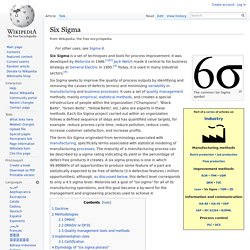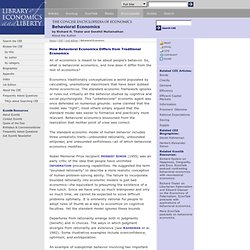

Www.cscs.umich.edu/~spage/ONLINECOURSE/R1Page.pdf. Www.cscs.umich.edu/~spage/ONLINECOURSE/R1Epstein.pdf. NetLogo Home Page. NetLogo is a multi-agent programmable modeling environment.

It is used by tens of thousands of students, teachers and researchers worldwide. It also powers HubNet participatory simulations. It is authored by Uri Wilensky and developed at the CCL. You can download it free of charge. What can you do with NetLogo? Join mailing lists here. Download NetLogo Go to NetLogo Web. Www.cscs.umich.edu/~spage/ONLINECOURSE/R2Schelling.pdf. Www.cscs.umich.edu/~spage/ONLINECOURSE/R2Granovetter.pdf. Www.cscs.umich.edu/~spage/ONLINECOURSE/R2StandingOvation.MillerPage.pdf. Sampling Distribution. Suppose that we draw all possible samples of size n from a given population. Suppose further that we compute a statistic (e.g., a mean, proportion, standard deviation) for each sample. The probability distribution of this statistic is called a sampling distribution. Variability of a Sampling Distribution The variability of a sampling distribution is measured by its variance or its standard deviation.
The variability of a sampling distribution depends on three factors: N: The number of observations in the population. If the population size is much larger than the sample size, then the sampling distribution has roughly the same sampling error, whether we sample with or without replacement. Central Limit Theorem The central limit theorem states that the sampling distribution of any statistic will be normal or nearly normal, if the sample size is large enough. How large is "large enough"?
Binomial Distribution. To understand binomial distributions and binomial probability, it helps to understand binomial experiments and some associated notation; so we cover those topics first.

Binomial Experiment A binomial experiment (also known as a Bernoulli trial) is a statistical experiment that has the following properties: The experiment consists of n repeated trials. Each trial can result in just two possible outcomes. We call one of these outcomes a success and the other, a failure. Six Sigma. The common Six Sigma symbol Six Sigma is a set of techniques and tools for process improvement.

It was developed by Motorola in 1986.[1][2] Jack Welch made it central to his business strategy at General Electric in 1995.[3] Today, it is used in many industrial sectors.[4] Six Sigma seeks to improve the quality of process outputs by identifying and removing the causes of defects (errors) and minimizing variability in manufacturing and business processes. It uses a set of quality management methods, mainly empirical, statistical methods, and creates a special infrastructure of people within the organization ("Champions", "Black Belts", "Green Belts", "Yellow Belts", etc.) who are experts in these methods.
Each Six Sigma project carried out within an organization follows a defined sequence of steps and has quantified value targets, for example: reduce process cycle time, reduce pollution, reduce costs, increase customer satisfaction, and increase profits. Doctrine[edit] Methodologies[edit] Www.cscs.umich.edu/~spage/ONLINECOURSE/R3CAs.pdf. Www.cscs.umich.edu/~spage/ONLINECOURSE/R3CA2.pdf. Www.cscs.umich.edu/~spage/ONLINECOURSE/R3Preferences.pdf. Www.cscs.umich.edu/~spage/ONLINECOURSE/R4MCRI.pdf. Www.cscs.umich.edu/~spage/ONLINECOURSE/R4Spatial.pdf. Www.cscs.umich.edu/~spage/ONLINECOURSE/R4Decision.pdf. Behavioral Economics. How Behavioral Economics Differs from Traditional Economics All of economics is meant to be about people’s behavior.

So, what is behavioral economics, and how does it differ from the rest of economics? Economics traditionally conceptualizes a world populated by calculating, unemotional maximizers that have been dubbed Homo economicus. The standard economic framework ignores or rules out virtually all the behavior studied by cognitive and social psychologists. This “unbehavioral” economic agent was once defended on numerous grounds: some claimed that the model was “right”; most others simply argued that the standard model was easier to formalize and practically more relevant. The standard economic model of human behavior includes three unrealistic traits—unbounded rationality, unbounded willpower, and unbounded selfishness—all of which behavioral economics modifies.
Departures from rationality emerge both in judgments (beliefs) and in choices. Finally, people are boundedly selfish. Saving. Www.cscs.umich.edu/~spage/ONLINECOURSE/R5CategoricalModels.pdf. Www.cscs.umich.edu/~spage/ONLINECOURSE/R5Linearmodels.pdf. Www.cscs.umich.edu/~spage/ONLINECOURSE/R7Tips.pdf. Www.cscs.umich.edu/~spage/ONLINECOURSE/R7Diffusion.pdf. Tipping Points. Www.cscs.umich.edu/~spage/ONLINECOURSE/R8growth.pdf. Www.cscs.umich.edu/~spage/ONLINECOURSE/R9ProblemSolving.pdf.
Www.cscs.umich.edu/~spage/ONLINECOURSE/R10Markov.pdf.